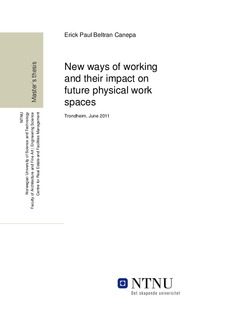| dc.description.abstract | This master’s thesis aims to suggest the ways in which people will work in the future and how organizations can
develop their physical spaces to support and adapt to their employees’ future ways of working.
The study hypothesizes that employees’ ways of working will be greatly affected by information technology,
primarily tools that will allow them to communicate and collaborate both across the hall and across the globe.
The question is: By 2022, what will the physical elements of the workplace be like in an organization with global
presence? To answer this question, the study used three qualitative research methods: literature review, scenario
planning and case study.
The scope of the research study was limited to Statoil, a Norwegian oil and gas company with global presence.
The use of Statoil corporate scenarios enabled the study to suggest Statoil’s future ways of working, but limited the
results’ validity to this organization, without the ability to generalize.
Among the findings is the fact that the workplace consists of social, virtual and physical spaces, which are
dependent on one another. Employees will probably work in different places - office buildings, satellite offices, their
homes, cafes - depending on their needs and preferences. As such, office buildings will be more social hubs, because
despite the advances in virtual communication, physical interaction will still matter.
A case study shows that Statoil could arrange physical spaces to best support existing work practices by providing
these facilities: privacy rooms, team arenas, interplay rooms, study rooms and playstation areas.
The research recommends that in order to increase collaborative capabilities in the future, Statoil should design more
collaborative work spaces to support new ways of working.
Rather than requiring employees to adapt to the physical space, organizations should take a more holistic approach
to office space design so that it easily adapts to employees’ future ways of working. | nb_NO |
